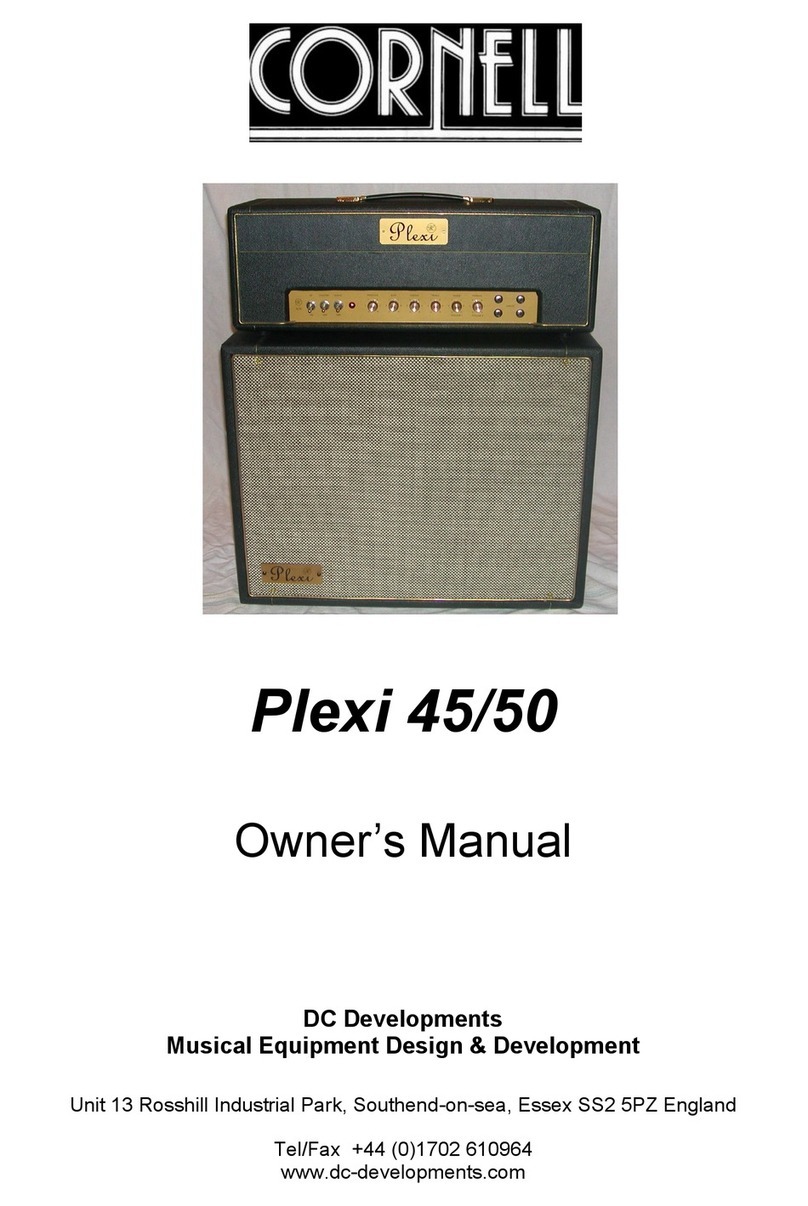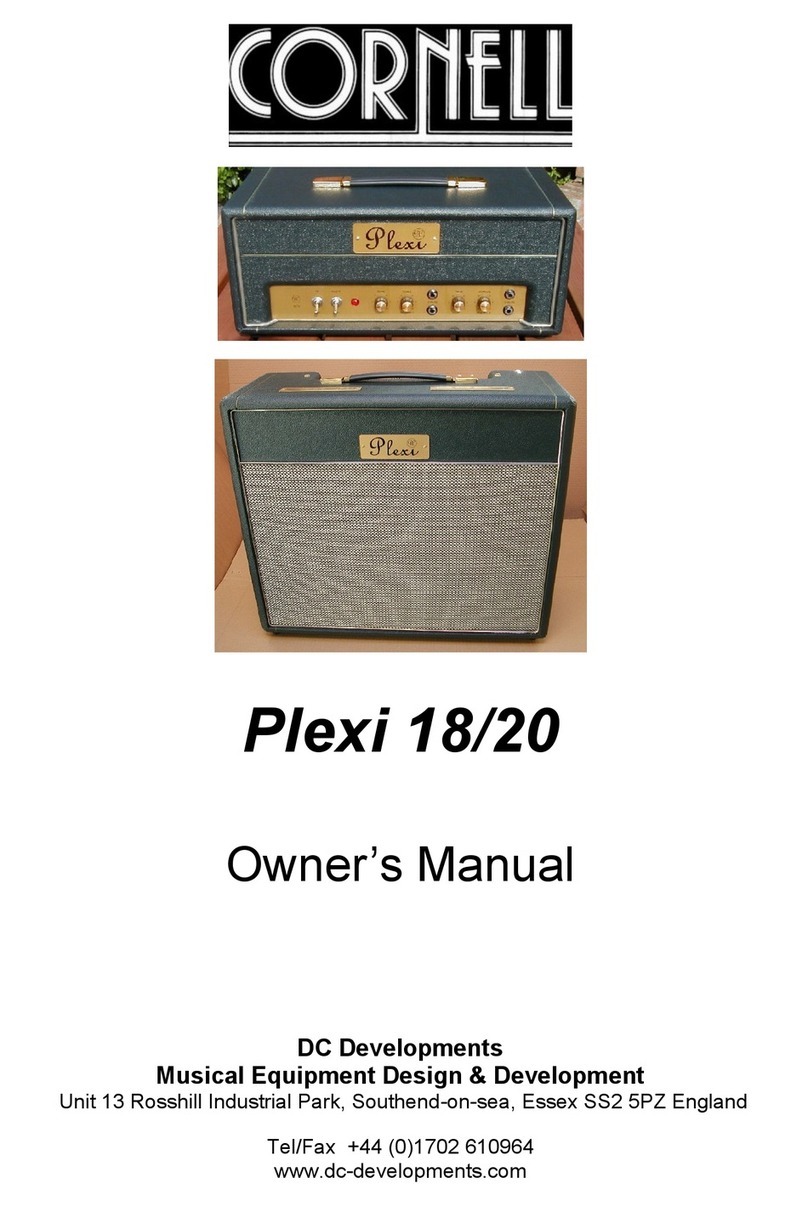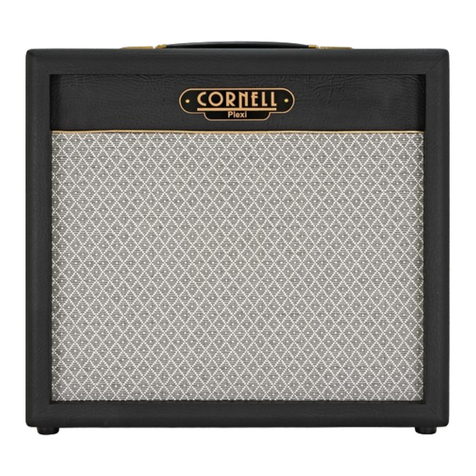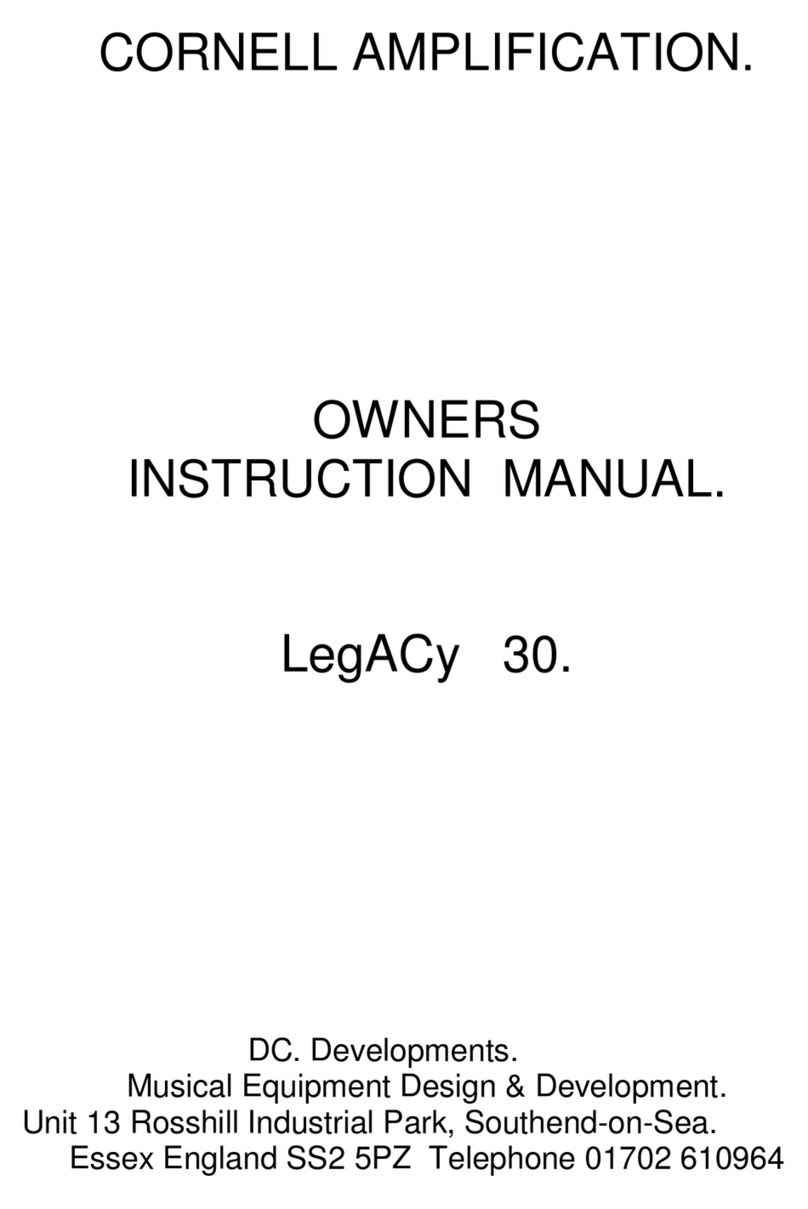Technical Design
Virtually all modern amplifiers are built using printed circuit boards, which contain
conductor tracks that connect components together, these conductor tracks often
run very close to one another. When this happens a small capacitance is produced
between them, the result of which is a substantial loss in both high frequency
response and harmonic richness. The Cornell-Plexi is designed to avoid this by
having specific point to point wiring.
Components in the Cornell-Plexi amplifier are mounted on a specially designed
board. This board is produced by the original manufacturer of the 1967 Plexi board
and Turret Tags are hand-riveted onto the board where the components are
mounted. These components are then sealed using a conformal coating to prevent
noise and the shortening of component life caused by moisture penetration.
The steel chassis holds specially designed, interleaved transformers, wound with
impregnated paper. The design ensures a very close reproduction of the full
harmonic spectrum of your guitar’s pick-ups.
The cabinet is of a rigid construction using best quality plywood. The covering is
both heavy duty and burn resistant, The cabinet is handsomely finished and
features original fittings.
The Pre-amplifier
The Cornell-Plexi is designed to be simple in use and yet produce the wide range
of sounds that the musician expects from a professional amplifier.
There are two independent channels each having its own volume control which
controls the overall loudness of the amplifier. The Tone controls are designed to
work over the entire frequency range of your guitar, allowing increased amounts of
low and high frequency adjustment. Channel Two has a brighter tone than that of
that of Channel One.
The Output Stage
Most modern amplifiers use Class AB1 or AB2 output designs which control the
grids of the output valves by a negative voltage –bias voltage. Should the bias
voltage be set too high, cross-over distortion occurs and is present constantly in the
sound of the amplifier, creating a “fuzzy” tone. If set too low, the valves might begin
to glow red which considerably reduces their lives resulting in expensive
replacements.
The Cornell-Plexi 18/20 has a Class A output design achieved by means of a fixed
bias resistor. The resistance valve is selected to complement exactly the
characteristics of the output valve. With its Class A output, the Cornell-Plexi 18/20
gives a sweeter tone with less distortion and avoids the need for bias adjustments.
3

































